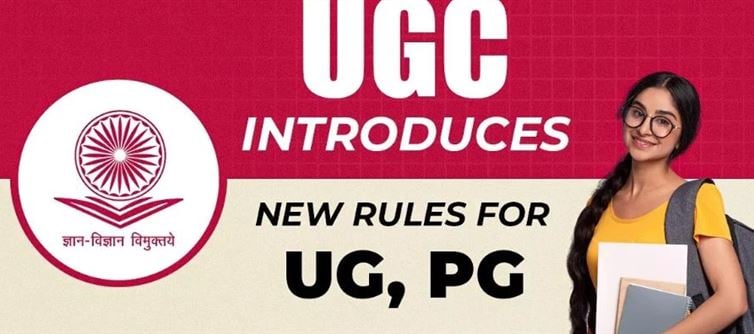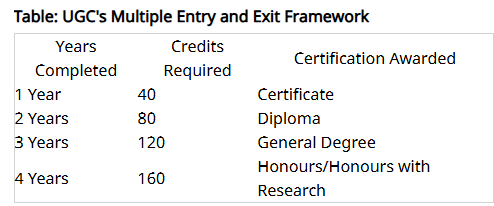
These modifications, which have their roots in the National education Policy (NEP) 2020, aim to increase the flexibility, accessibility, and competitiveness of higher education in india on a worldwide scale. With choices like various entry and exit points, interdisciplinary learning, and the chance to pursue two degrees simultaneously, students will now have the flexibility to personalize their academic paths.
1
One of the most important modifications is the Multiple Entry and Exit System, which permits students to return to school at a later time without losing their progress and to obtain a certificate, diploma, or degree based on the credits they have earned. Credits will be digitally stored by the Academic bank of Credits (ABC), facilitating transfers across universities. The merger of skill-based learning and biennial admissions will also modernize higher education and make it more responsive to industry and student expectations.
Major Highlights of UGC's 2025 Reforms
Multiple Entry and Exit: students may leave with a certificate, diploma, regular degree, or honors degree, accordingly, after 1, 2, 3, or 4 years.
Academic bank of Credits: Since all of the credits are digitally kept, students can utilize, accumulate, and transfer them between indian colleges.
Dual Degrees: students may concurrently pursue two undergraduate or graduate degrees, even from separate schools or in various modes (distance, online, or offline).
Biannual Admissions: By admitting students twice a year—in July/August and January/February—universities can shorten wait times and provide students more freedom.
Interdisciplinary and Skill-Based Learning: The majority of credits must come from interdisciplinary, vocational, or skill-based courses, including internships, with at least 50% coming from the major topic.
Discipline-Agnostic Admissions: If students pass the appropriate entry exam, they are free to select any program, regardless of their prior field of study.
Flexible Attendance: In order to accommodate hybrid and changing academic models, higher education institutions are free to establish their own attendance policies.

How to Check UGC Regulations and Updates
Visit the Official UGC Website: Go to ugc.gov.in
Navigate to 'Regulations' or 'Guidelines': Find the latest rules for UG and PG courses under the 2025 regulations.
Review Drafts and Notices: Check for public notices, draft regulations, and final guidelines.
Download and Access the full text for details on credit systems, degree durations, and eligibility.
Stay Updated: Follow updates for any changes, feedback deadlines, or clarifications.
What These Reforms Mean for Students
Increased Flexibility: students don't have to start again when they pause and continue their studies, change their majors, or follow different interests.
Global Competitiveness: Promotes worldwide mobility and recognition by bringing indian degrees into line with international standards.
In addition to academic learning, skill-readiness places a strong emphasis on internships, vocational training, and practical skills.
Improved Access: Traditional obstacles are eliminated via discipline-agnostic admissions and biannual admissions, which broadens access to higher education.
Official Website
For the full regulations, guidelines, and official updates, visit: ugc.gov.in
A revolutionary, student-centered higher education system that equips indian youth with choice, flexibility, and skills for the future is what the UGC's 2025 reforms promise.




 click and follow Indiaherald WhatsApp channel
click and follow Indiaherald WhatsApp channel